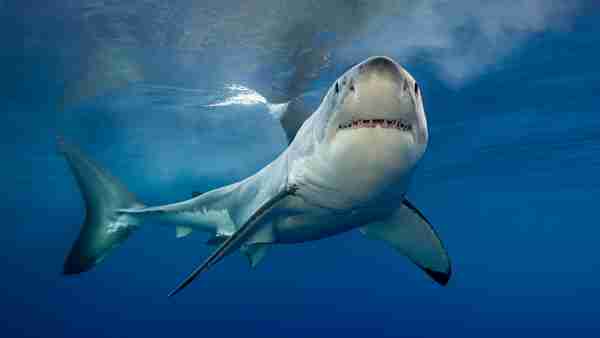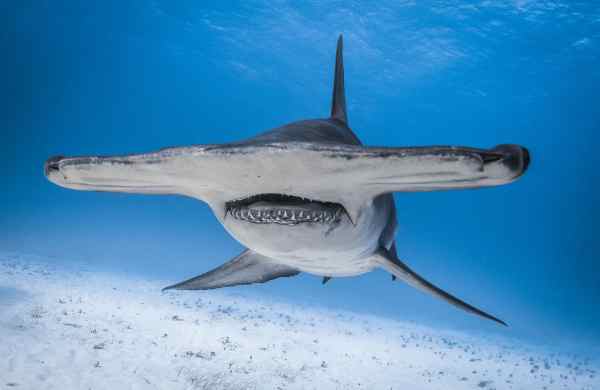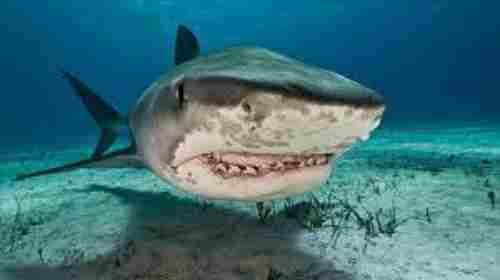It’s true that movies and media have often sensationalized sharks, leading to unjustified fears among people. While there have been no recorded shark attacks in Washington state for a considerable period, it is still essential to exercise caution when swimming or engaging in water activities.
Table of Contents
To ensure safety in the waters, it’s best to avoid provoking any sea creature, including sharks, while swimming or surfing. Sharks typically do not pose a threat to humans unless they feel provoked or threatened. Moreover, it’s important to recognize that not all shark species are aggressive or blood-thirsty, as portrayed in movies.
While there are approximately thirty different shark species in Washington’s waters, interactions with them are infrequent, and attacks are extremely rare. Nevertheless, being mindful of your surroundings and following safety guidelines while enjoying the sea can help prevent any potential issues with marine creatures, including sharks.
Remember, sharks play a vital role in marine ecosystems, and understanding and respecting their natural behavior is key to coexisting peacefully with these magnificent creatures in their habitat.
Does Washington Have Shark-Infested Waters?
Washington may not be the first state that comes to mind when you think of shark-infested waters. However, with over 25 species of sharks living in the waters surrounding the state, it’s fair to say that these creatures are not uncommon here. If the idea of encountering a shark while swimming or surfing is enough to make you break out in a cold sweat, it’s important to remember that not all sharks are predators.
In fact, many species prefer to keep to themselves and only attack when they are hungry and come across a viable food source. While the name “shark” may elicit images of bloodthirsty creatures, the reality is that most shark species are not big enough to pose a threat to humans.
How Many Shark Species Are There In Washington?
The waters off the coast of Washington State are home to a diverse range of shark species, each playing a vital role in the regional ecosystems. However, it’s essential to recognize that many shark species worldwide are facing the threat of extinction.
Let’s take a closer look at some of the largest shark species found in Washington State:
#1 Salmon Sharks:
Salmon sharks are strong swimmers with broad tails and can reach lengths of over 10 feet. They are well-adapted to cold waters and are commonly found in offshore seas, ranging from the surface to depths of at least 500 feet.
#2 Tiger Shark:
Tiger sharks have short, wide, and sharp teeth, making them powerful carnivorous hunters. They are known for their aggressive behavior and are considered one of the most dangerous shark species globally. Their name comes from the dark stripes on their bodies, resembling the patterns of a tiger.
#3 Great White Shark:
The great white shark, also known as the white shark, can grow up to 20 feet in length. It is a carnivorous species, preying on various marine creatures, including fish and seabirds. While it has no known natural predators, the great white shark is infamous for occasional attacks on humans.
#4 Dusky Shark:
Dusky sharks thrive in tropical and warm continental oceans worldwide. They can reach lengths of up to 11 feet and weigh between 350 and 400 lbs on average. Due to their slow growth and late maturation, they are susceptible to overfishing.
#5 Cat Shark:
Cat sharks are a diverse group of small shark species with dark streaks and patches on their skin. They are typically found in all major marine habitats in tropical and temperate zones. Cat sharks are not known to be hostile towards humans and primarily consume small fish and invertebrates.
#6 Sand Tiger Shark:
Also known as gray nurse sharks, sand tiger sharks have large bodies and distinctive teeth that protrude even when their mouths are closed. They are unique as they surface to breathe, not to swallow air. Sand tiger sharks are not particularly aggressive toward humans and only pose a threat when bothered.
#7 Blacktip Shark:
Blacktip sharks are named after the distinctive black markings on their fin tips. They can grow up to eight feet long and are sometimes involved in unintentional bites on humans. They can become aggressive when they smell food.
#8 Basking Shark:
The basking shark is the second-largest shark species after the whale shark and is a filter feeder, feeding on plankton by filtering water. Despite their size, they are passive species and avoid human contact.
While sharks are fascinating creatures, it is crucial to respect their natural behavior and take measures to protect their populations and ocean ecosystems. Responsible and sustainable practices are essential to ensure the survival of these magnificent creatures for future generations.

Reported Shark Attacks In Washington
Shark attacks in Washington state are rare, with only two reported incidents on record. Let’s delve into the details of these reported shark attacks:
- Most Recent Reported Shark Attacks in Washington:
In 2017, there were nine documented shark attacks reported along the coast from California to Washington. All of these incidents were believed to involve great white sharks. Fortunately, in the Washington attack, no injuries were reported. However, a great white shark did harm a man’s surfboard during the encounter.
- First Recorded Shark Attacks in Washington:
The first confirmed shark attack in Washington during the 20th century occurred on Wednesday, April 12, 1989. Surfer Robert Harms was sitting on his purple surfboard approximately 100 meters off Pacific Beach near Aberdeen in western Washington. He noticed a large gray fish near his surfboard and saw a swirl in the water. Realizing it was a shark, Harms composed himself and paddled back towards the shore.
During his attempt to get away from the shark, the surfer’s arm was grabbed by the shark when he made a minor push on it. Harms managed to pull his arm away from the shark but sustained numerous wounds in the process. As he reached the coast, he took off his wetsuit to tend to his injuries and eventually made it to the beach.
Despite these reported incidents, it’s important to emphasize that shark attacks in Washington are exceedingly rare. The chances of encountering a shark while exploring the state’s seaside are quite low, and the vast majority of ocean activities in the area are safe. Nevertheless, it’s always prudent to stay cautious and informed about potential safety measures when in the ocean.

Types of Shark
The portrayal of sharks in movies has created an unwarranted fear in many people, but it’s important to recognize that not all shark species are dangerous predators. Let’s take a closer look at some shark species found in the Pacific Ocean near Washington:
Sharks with Weird Shapes:
Scalloped, bonnethead, and smooth hammerhead sharks can be found close to the state of Washington. Thresher sharks are known for their unique hunting behavior, where they gather and stun small bait fish like sardines and anchovies, which form their primary food source. While these swiftly swimming sharks can weigh up to nearly 1,000 pounds, they are generally not a threat to humans. Nonetheless, it’s advisable to maintain a safe distance if you come across them.
The Middle Class:
Sand tiger sharks are often referred to as “middle-class sharks” due to their few teeth. They prefer deep waters near the continental slope and reside at the bottom. Blue sharks are medium-sized sharks that can grow up to about 9 feet in length. Blacktip sharks are also considered middle-class sharks, typically reaching lengths under 6 feet. They primarily consume fish and small sharks. Although they are commonly found in the vast ocean away from the shore, there is still a potential risk to humans.
Small Sized:
Small-sized sharks are indeed not harmful to humans. These sharks, including dogfish, catfish, and leopard sharks, tend to avoid confrontation with larger creatures, including humans. The spiny dogfish is a slow-moving, bottom-dwelling species that can grow up to around 3 feet in length. It is one of the most prevalent and widely studied shark species in the world.
Leopard sharks, on the other hand, grow to a maximum length of about 4 to 5 feet and are also non-lethal to humans. All cat sharks are small, little-known deep-water bottom dwellers, and the waters off the coast of Washington are home to several species of deep-water cat sharks.
Understanding the diverse range of shark species can help dispel unnecessary fears and foster a greater appreciation for these remarkable creatures and their important role in marine ecosystems.

Gentle Giants
Although there are several species that could fit this description, basking sharks stand out for their sheer size, reaching up to a staggering 40 feet in length. Despite their intimidating appearance, these creatures have no interest in preying on humans or other moving beings.
They are notoriously lazy, preferring to feed on plankton and other readily available sources rather than expend energy pursuing potential prey. For this reason, basking sharks are sometimes referred to as the “cows of the sea”.
Sea Monsters or Predators
Sharks are one of the most fascinating creatures in the sea, and their carnivorous nature makes them natural predators. Blue sharks, great whites, and tiger sharks are often referred to as “sea monsters,” and for good reason. Both the tiger and great white sharks are the largest predatory species in the ocean, with the latter growing to an impressive 20 feet long.
They have a taste for marine mammals, such as seals, dolphins, and whales, while still posing a threat to humans. Meanwhile, smaller sharks such as salmon and dusky ones can grow up to 8 to 12 feet long and may still potentially cause harm to humans. Understanding these fascinating species can help us better appreciate what lies beneath the ocean’s surface.
Shark Attacks In Washington: What To Do When Faced With A Shark?
You have provided excellent safety tips for avoiding unnecessary interactions with sharks and ensuring a safer experience while in the water. Let’s recap these important guidelines:
- Stay Informed: Be aware of the presence of sharks in the area you plan to swim or surf. If sharks are known to be in the vicinity, it’s best to stay out of the water altogether.
- Avoid Bright Colors: Sharks have excellent contrast vision, so avoid wearing brightly colored or highly contrasting apparel that might attract their attention.
- Minimize Splashing: Sharks can detect splashing and low-frequency sounds, which might attract their curiosity. Avoid excessive splashing, especially in one area, as it could be mistaken for prey activity.
- Be Cautious with Fishing: Avoid fishing in areas known for shark activity or where baitfish are present, as this might attract sharks closer to shore.
- Be Mindful of Time: Sharks are more active and feed during dusk and nighttime. Avoid swimming in the sea during these times when shark activity is higher.
- Swim with a Partner: Swimming with a partner is recommended as sharks are more likely to approach lone swimmers. Staying closer to shore and having someone nearby can provide added safety and emergency support.
- Listen to Lifeguards: If there are lifeguards on duty, follow their instructions and adhere to any safety guidelines they provide.
By following these safety tips, individuals can enjoy their time in the water while minimizing potential risks and ensuring a safer experience for themselves and the sharks. It’s important to remember that sharks play a crucial role in marine ecosystems, and respecting their natural behavior is essential for peaceful coexistence in their habitats.

Shark Attacks In Washington: How Likely Is It to Survive a Shark Attack?
The increasing prevalence of recording shark encounters on social media is no coincidence. With the advancement of technology, more people are being exposed to these thrilling and sometimes dangerous interactions. However, it’s important to note that the likelihood of surviving a shark attack has also increased thanks to improvements in emergency response times, medicine, and first aid techniques.
In the past, a bull shark attack could potentially be fatal, but with these advancements in trauma treatment, accidents that were once lethal can now be treated more successfully. While it’s important to appreciate and showcase the beauty of these powerful creatures, it’s also vital to understand the potential risks and how to properly respond in case of an encounter.
Shark Attacks In Washington: What To Do If a Shark Starts Following You?
You have provided important tips for staying safe in a situation where you encounter a shark. Let’s review these crucial safety measures:
- Stay Calm
It may be challenging, but it’s essential to remain calm when encountering a shark. Panicking will not help and may attract more attention from the shark. Avoid splashing around, as it can provoke the shark’s curiosity and potentially lead to an exploratory bite.
- Keep Watching It
Maintain awareness of the shark’s movements and keep your head swiveled to track its position. If you are surfing, keep the shark in your field of view and follow it with your board to alert it to your presence.
- Avoid Acting Dead
Playing dead will not deter a shark that perceives you as potential prey. If you find yourself in a situation where the shark is going to attack, use whatever is in your hands as a weapon to defend yourself. Aim for sensitive areas like the nose, eyes, or gills, as these can deter the shark and allow you to escape safely.
Remember that shark attacks are rare, and sharks are not actively seeking out humans as prey. By staying informed, following safety guidelines, and respecting these magnificent creatures’ natural behavior, you can minimize any potential risks and enjoy a safer experience in the water.
FAQs
Are there sharks in Washington?
Many people might not think of Washington State as a place where you would find sharks, but the truth is that they do exist in the Pacific Northwest waters. While most of the species that call the area home are non-threatening to humans, there have been occasional sightings of more aggressive varieties such as great white sharks.
Where has the most reported shark attacks?
According to statistics from the International Shark Attack File, the state of Florida in the United States has the highest number of reported shark attacks. In fact, in 2020 alone, Florida had 16 confirmed shark attacks. This could be due to the fact that Florida has one of the longest coastlines in the US, meaning there are more opportunities for humans to come in contact with sharks.
Who was the girl bitten by a shark in WA?
In Western Australia, a young girl recently became the victim of a terrifying shark attack. While little information has been released about the identity of the girl, it is known that she suffered severe injuries to her leg when she was bitten by a shark while swimming in a popular tourist spot.
Final Words on Shark Attacks In Washington
Washington is a state that may surprise you when it comes to shark attacks. Despite having up to thirty species of sharks inhabiting its waters, the state has only reported two shark attacks in the past thirty years. These incidents both occurred in Grays Harbor on the west coast of the state.
It is important to note that staying in areas where there are people and lifeguards around can greatly decrease the likelihood of a shark attack. We advise caution when exploring unfamiliar or remote parts of the sea, and always prioritise your safety above all else. Overall, Washington provides a unique opportunity to witness these fascinating creatures without the fear of danger.
Reference:
- https://7news.com.au/news/shark-attack/west-australian-shark-attack-victim-stella-berry-remembered-as-the-sweetest-girl–c-9664075
- https://keyw.com/uncovering-mystery-have-there-ever-been-sharks-in-the-columbia-river/
- https://www.theswimguide.org/beaches/washington

Jeevan Kodiyan
An animal enthusiast with an interest in zoology, studying the behavior and activities of animals in the wild habitat. I work on research projects related to species conservation and endangered species protection. I also leverage zoology to become an educator, educating others about the importance of protecting our natural environment and the beauty of animals in their natural habitats.









